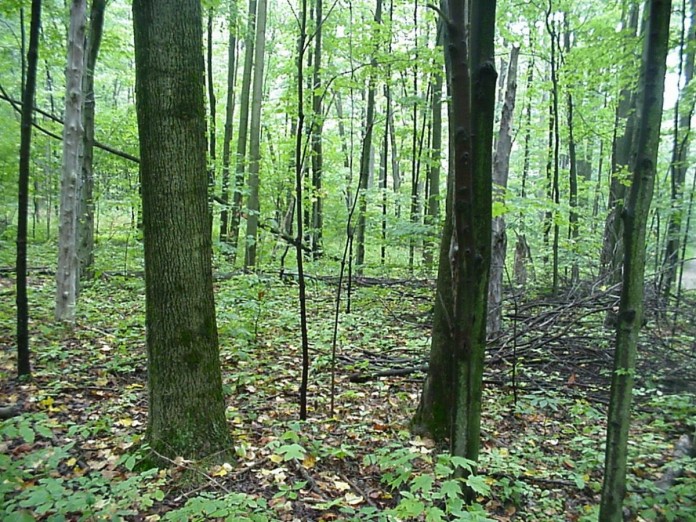ZANESVILLE, Ohio — The Ohio Forestry Association has yet to take an official stance against the proposed Hardwood Lumber and Hardwood Plywood Promotion, Research and Information Order. But it may be coming soon.
At its annual meeting earlier this year, many OFA members were surprised to learn a hardwood checkoff proposal was still being considered by the USDA.
“The proposal has been floating around for several years by some folks in the industry,” said John Dorka, Ohio Forestry Association executive director.
The USDA had previously accepted comments, Dorka added, but “the understanding was (the hardwood checkoff) would not be moving forward.”
He said the association board is still considering its position on the checkoff.
Moving forward
Peter Wood, spokesperson for the USDA’s Agricultural Marketing Service, told Farm and Dairy the hardwood checkoff has “reached step three in the process,” with public and industry comments being evaluated by USDA.
Wood said he was not able to give a specific timetable for when the USDA would take the next step in the process.
A checkoff order is an industry-funded generic marketing and research program designed to increase domestic and international demand for an agricultural commodity. The USDA’s Agricultural Marketing Service has primary oversight responsibilities.
Bad framework
Dorka said the roughly 550 OFA members, representing approximately 100 lumber industry companies, feel there are several areas of concern related to the proposed structure of the hardwood checkoff, including the number of exemptions.
“The fee goes on certain manufacturers, but a large number of other manufacturers would be excluded,” Dorka said.
Dorka said some Ohio members have also questioned the need for a hardwood checkoff at all.
“Lumber is not often a product bought by consumers; it is bought by other producers who turn it into other products,” he said.
Dorka said hardwood must go through a number of processes before it becomes a marketable product — making promotion of that product, and determining who should pay for it, a challenge.
Grace Terpstra, spokesperson for the Hardwood Checkoff Committee, said the $10-$13 billion per year hardwood industry has never devoted more than $500,000 a year to promotion, education and research and is falling behind other competing industries.
“Every time a laminate floor is sold, a hardwood floor is not,” Terpstra said.
She also defended the equity of assessing based upon sales at the manufacturing level, adding that assessing landowners would be a less predictable model.
“It is $1 per $1,000 in sales for mills producing more than $2 million annually,” she said. “And of course the more you pay into it, the more of a vote you get; it is a dollar a vote.”
Those generating less than $2 million per year are exempted from paying into the checkoff, Terpstra said, “but all still benefit.”
Checkoff committee
The Hardwood Checkoff Committee is made up of representatives from 15 lumber and forest product companies.
The group’s proposal calls for green sawmill producers and kiln operating facilities with annual sales in excess of $2 million to pay into the checkoff — including concentration kiln drying yards producing more than $2 million annually — at a rate of $1 per $1,000 of sales.
Hardwood plywood mills producing over $10 million of annual production would pay $3 per $1,000 of production.
Integrated mill operators who buy green lumber, kiln dry it themselves, and sell kiln dried lumber products would not be subject to a double fee.
However, value-added products, including unfinished strip flooring and hardwood plywood panels, as well as lumber sold in the supply chain either at the sawmill producer or concentration yard, would be subject to the checkoff fee.
Other finished goods such as pallets, furniture or cabinetry would not be directly covered by the checkoff.
According to the proposal, members of the unpaid checkoff board would be selected through an industry-wide nomination process, approved by the USDA, with nominees expected to be “reflective of the industry sectors paying into the checkoff.”
National reaction
In February, the Virginia Forest Products Association followed the Missouri Forest Products Association in officially opposing efforts to create a national hardwood checkoff.
Dorka said Ohio may be next.
“We are working with our board to figure out if we do, indeed, need to take a position,” he said.











More stolen money from pockets.